Days 3-4: Flow Control and Functions
 Unggul Cahya Saputra
Unggul Cahya Saputra
Objective:
Learn if-else, loops (for, while, do-while), and switch-case.
Create simple examples to understand flow control.
Learn to create and call functions.
1. Flow Control
1.1 If-Else Statements:
The if-else statement is used to execute code blocks based on a condition.
void main() {
int number = 10;
if (number > 0) {
print('$number is positive');
} else if (number < 0) {
print('$number is negative');
} else {
print('$number is zero');
}
}
Explanation:
- The program checks if the
numberis greater than, less than, or equal to zero and prints the appropriate message.
1.2 Loops:
For Loop: The for loop is used to repeat a block of code a fixed number of times.
void main() {
for (int i = 0; i < 5; i++) {
print('i = $i');
}
}
Explanation:
- The loop starts from
i = 0and runs untili < 5, incrementingiby 1 in each iteration.
While Loop: The while loop is used to repeat a block of code as long as a condition is true.
void main() {
int i = 0;
while (i < 5) {
print('i = $i');
i++;
}
}
Explanation:
- The loop runs as long as
i < 5and incrementsiin each iteration.
Do-While Loop: The do-while loop is similar to the while loop but guarantees at least one iteration.
void main() {
int i = 0;
do {
print('i = $i');
i++;
} while (i < 5);
}
Explanation:
- The loop runs at least once and continues as long as
i < 5.
1.3 Switch-Case Statement:
The switch-case statement is used to execute one code block among many based on the value of a variable.
void main() {
int day = 3;
switch (day) {
case 1:
print('Monday');
break;
case 2:
print('Tuesday');
break;
case 3:
print('Wednesday');
break;
case 4:
print('Thursday');
break;
case 5:
print('Friday');
break;
case 6:
print('Saturday');
break;
case 7:
print('Sunday');
break;
default:
print('Invalid day');
}
}
Explanation:
- The
switchstatement evaluates the value ofdayand executes the matching case.
2. Functions
Functions are reusable blocks of code that perform a specific task.
2.1 Defining and Calling Functions:
void greet(String name) {
print('Hello, $name!');
}
void main() {
greet('Alice');
greet('Bob');
}
Explanation:
The
greetfunction takes aStringparameter and prints a greeting message.The
mainfunction callsgreetwith different arguments.
2.2 Returning Values from Functions:
int add(int a, int b) {
return a + b;
}
void main() {
int sum = add(3, 5);
print('Sum: $sum');
}
Explanation:
The
addfunction takes twointparameters and returns their sum.The
mainfunction callsaddand prints the result.
2.3 Anonymous Functions:
Anonymous functions are functions without a name, often used for short operations.
void main() {
List<int> numbers = [1, 2, 3, 4, 5];
numbers.forEach((number) {
print(number);
});
}
Explanation:
- The
forEachmethod takes an anonymous function and applies it to each element in the list.
Examples with Explanations
Example 1: Using If-Else and Loops
void main() {
int number = 5;
if (number % 2 == 0) {
print('$number is even');
} else {
print('$number is odd');
}
for (int i = 1; i <= 10; i++) {
print('$number x $i = ${number * i}');
}
}
Explanation:
The program checks if the number is even or odd and prints the result.
It then prints the multiplication table for the number using a
forloop.
Example 2: Switch-Case with Functions
String getDayName(int day) {
switch (day) {
case 1:
return 'Monday';
case 2:
return 'Tuesday';
case 3:
return 'Wednesday';
case 4:
return 'Thursday';
case 5:
return 'Friday';
case 6:
return 'Saturday';
case 7:
return 'Sunday';
default:
return 'Invalid day';
}
}
void main() {
int day = 4;
print('Day $day is ${getDayName(day)}');
}
Explanation:
The
getDayNamefunction takes a day number and returns the corresponding day name using aswitch-casestatement.The
mainfunction callsgetDayNameand prints the result.
Visual Explanations
1. If-Else Statement:
Figure 1.1: Flowchart of an if-else statement.
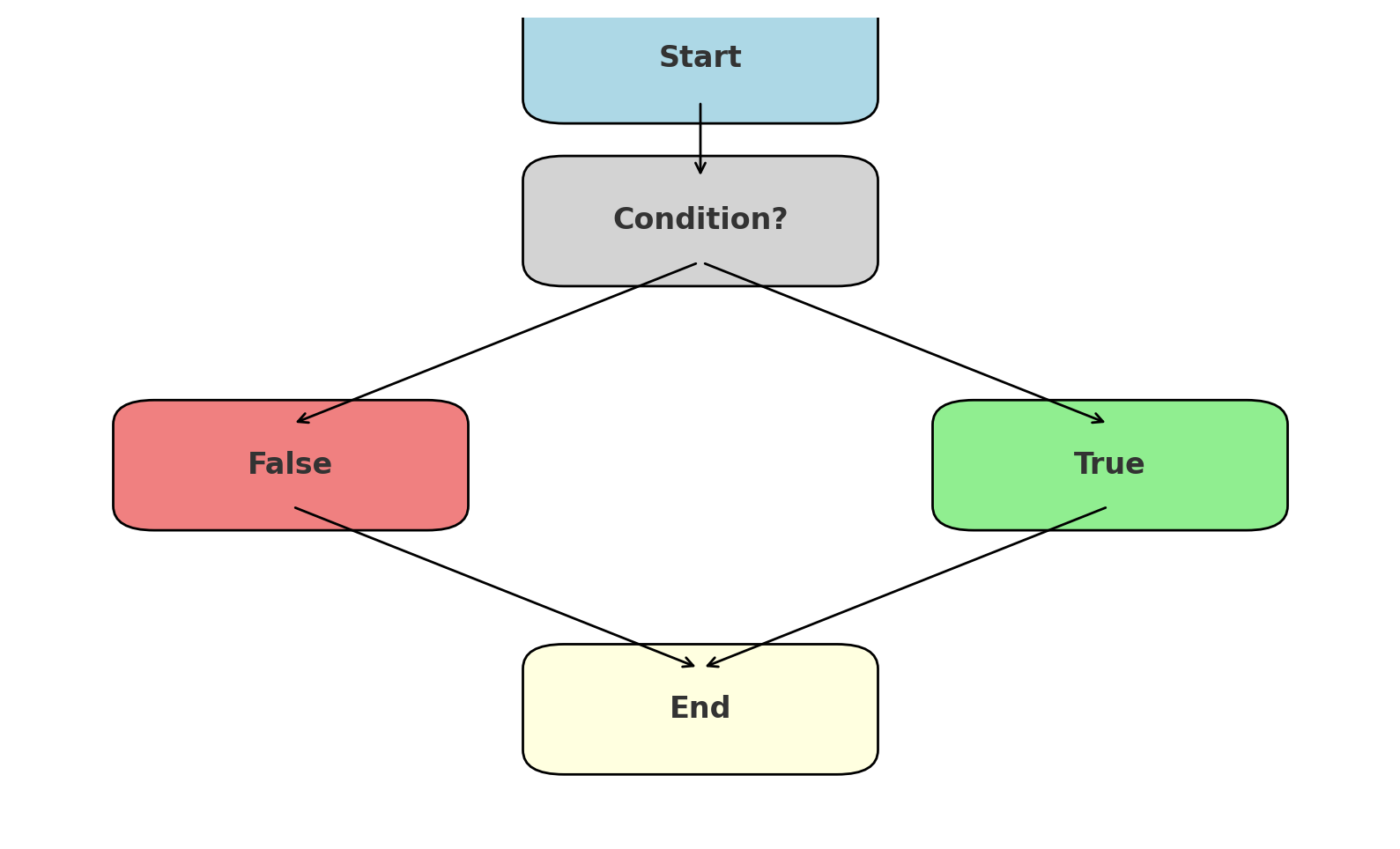
Figure 1.2: Example of using if-else statement in Dart.
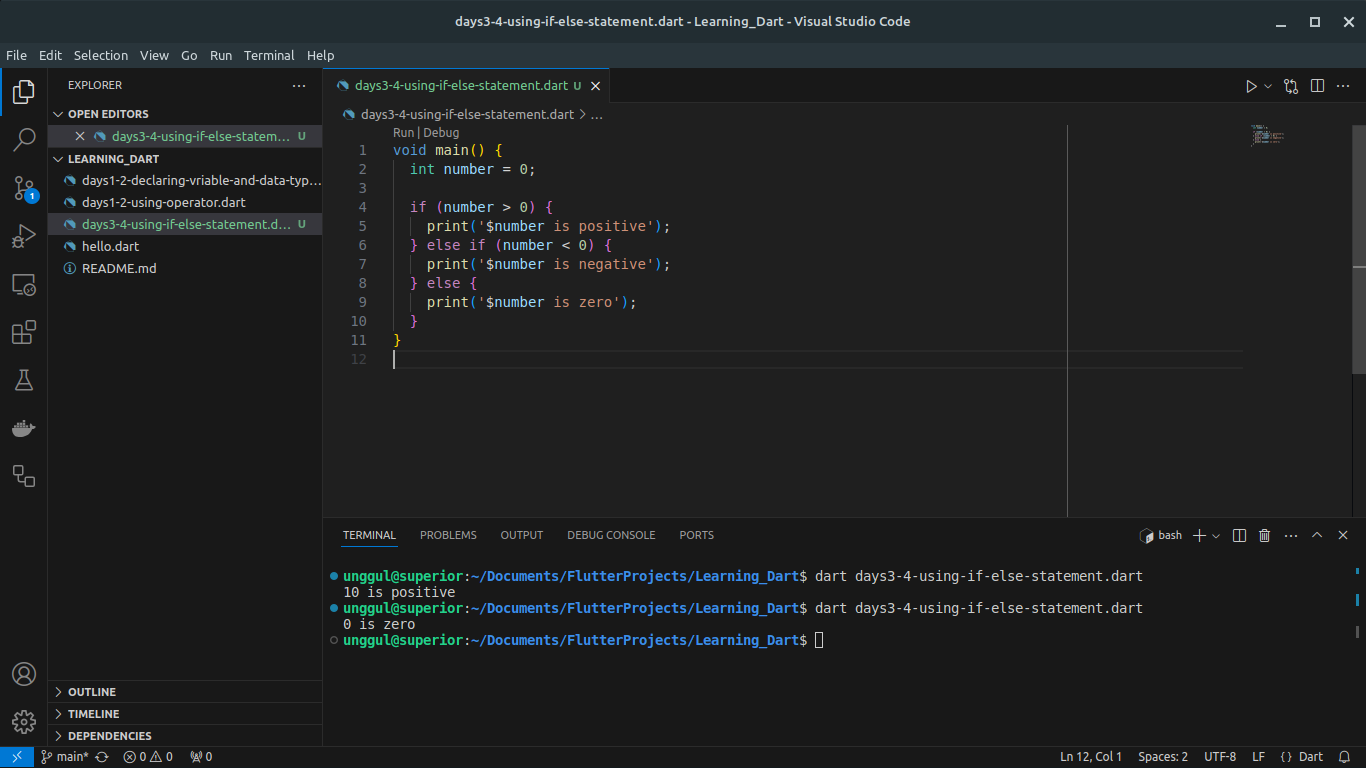
2. For Loop:
Figure 2.1: Flowchart of a for loop.
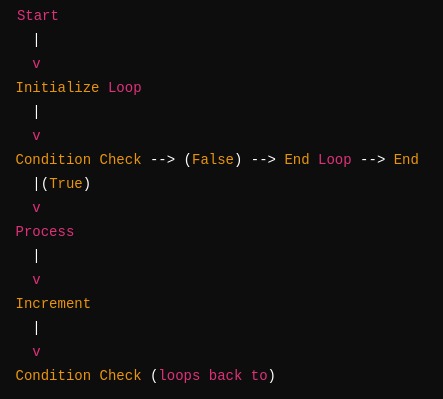
Figure 2.2: Example of using for loop in Dart.
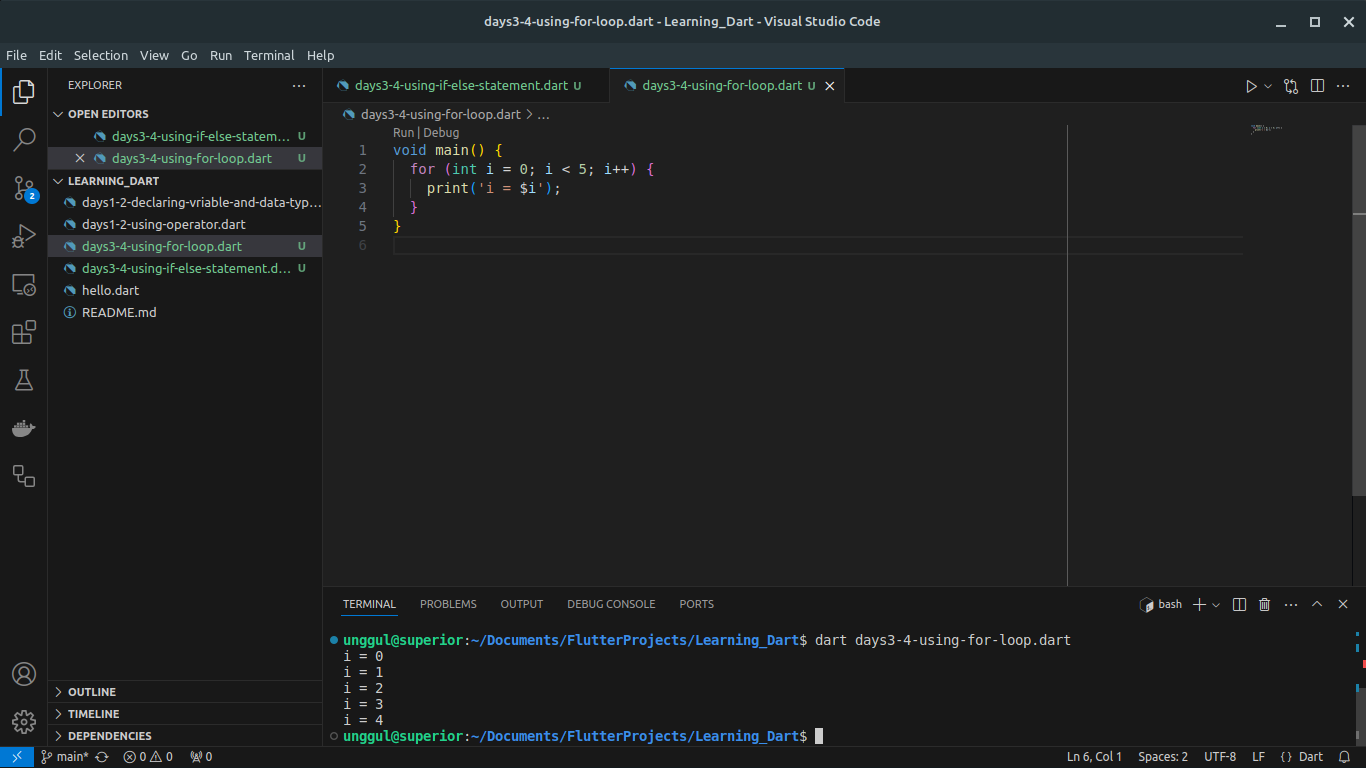
3. While Loop:
Figure 3.1: Flowchart of a while loop.
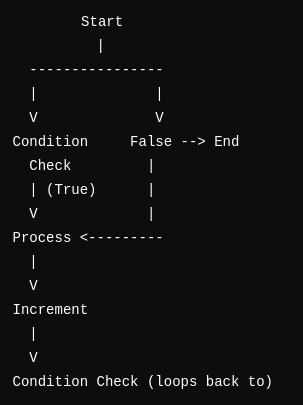
Figure 3.2: Example of using while loop in Dart.
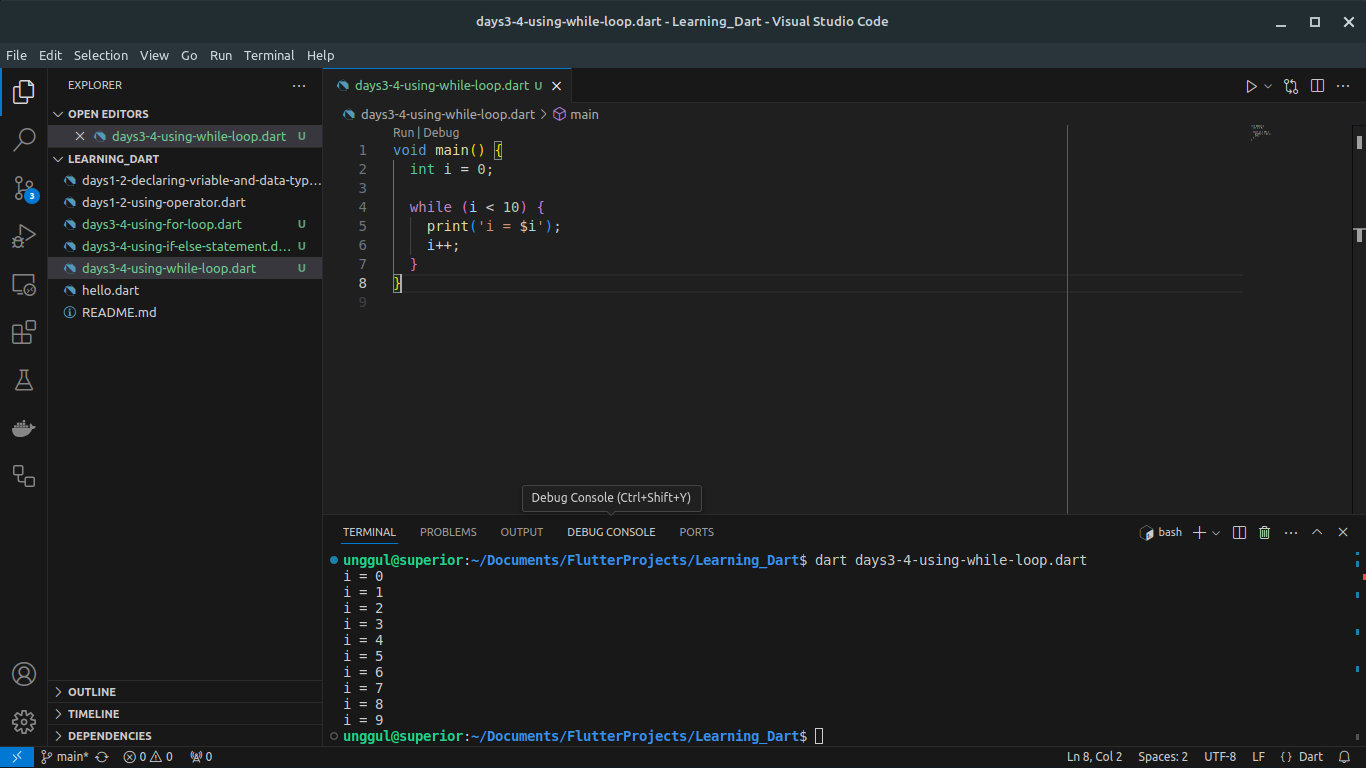
4. Do-While Loop:
Figure 4.1: Flowchart of a do-while loop.
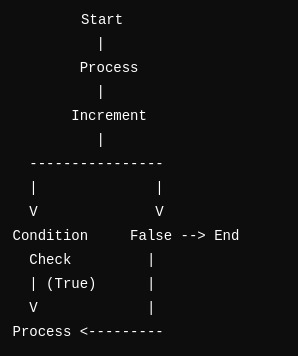
Figure 4.2: Example of using do-while loop in Dart.
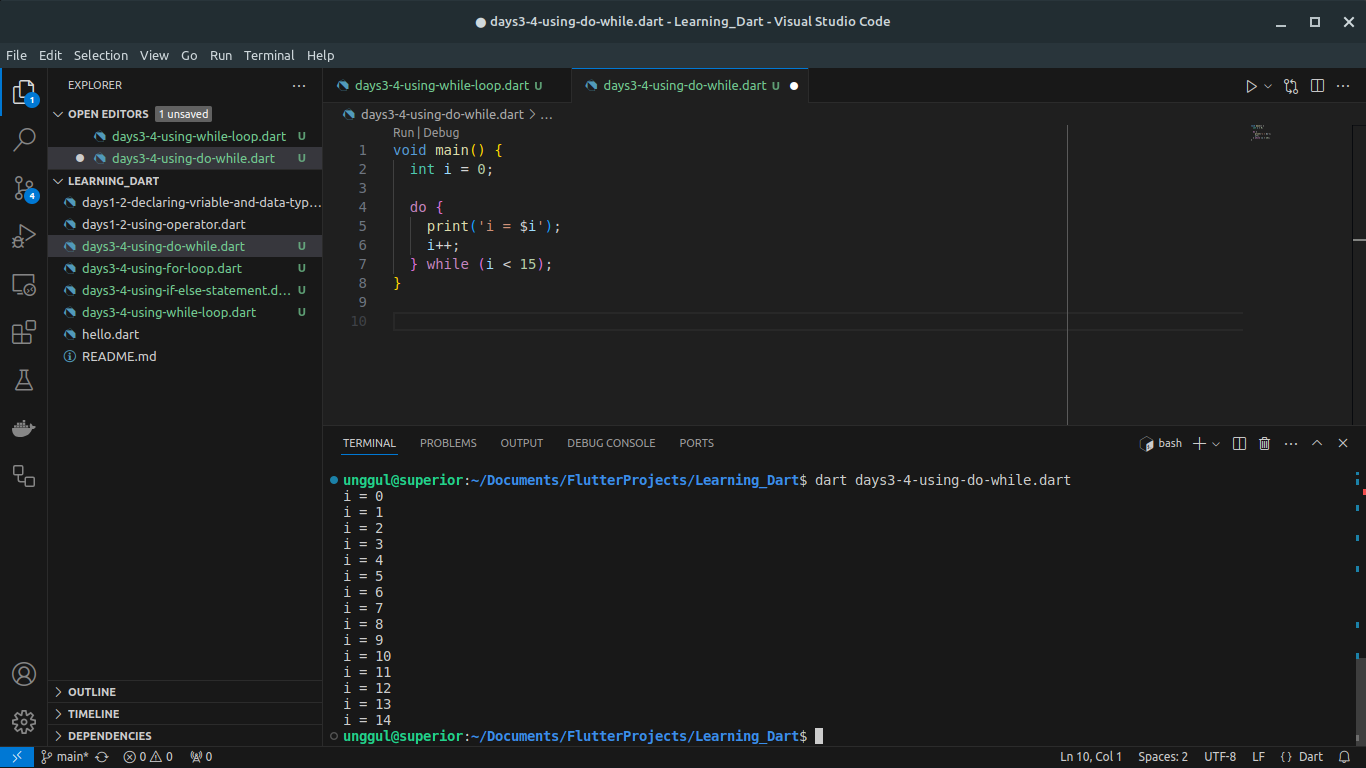
5. Switch-Case Statement:
Figure 5.1: Flowchart of a switch-case statement.
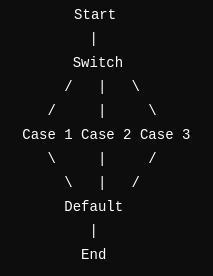
Figure 5.2: Example of using switch-case statement in Dart.
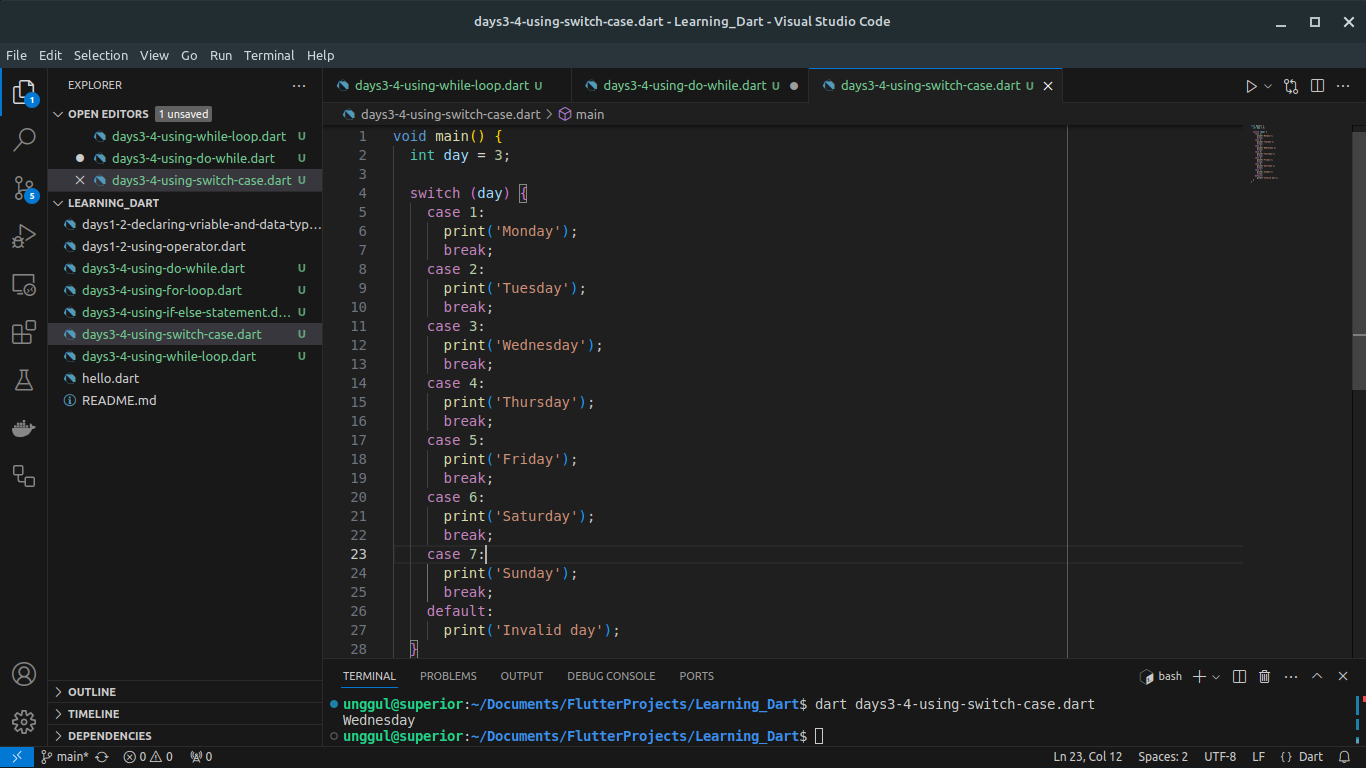
6. Functions:
Figure 6.1: Diagram of a function call.
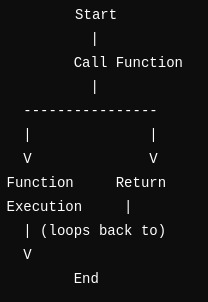
Figure 6.2: Example of using function call in Dart.
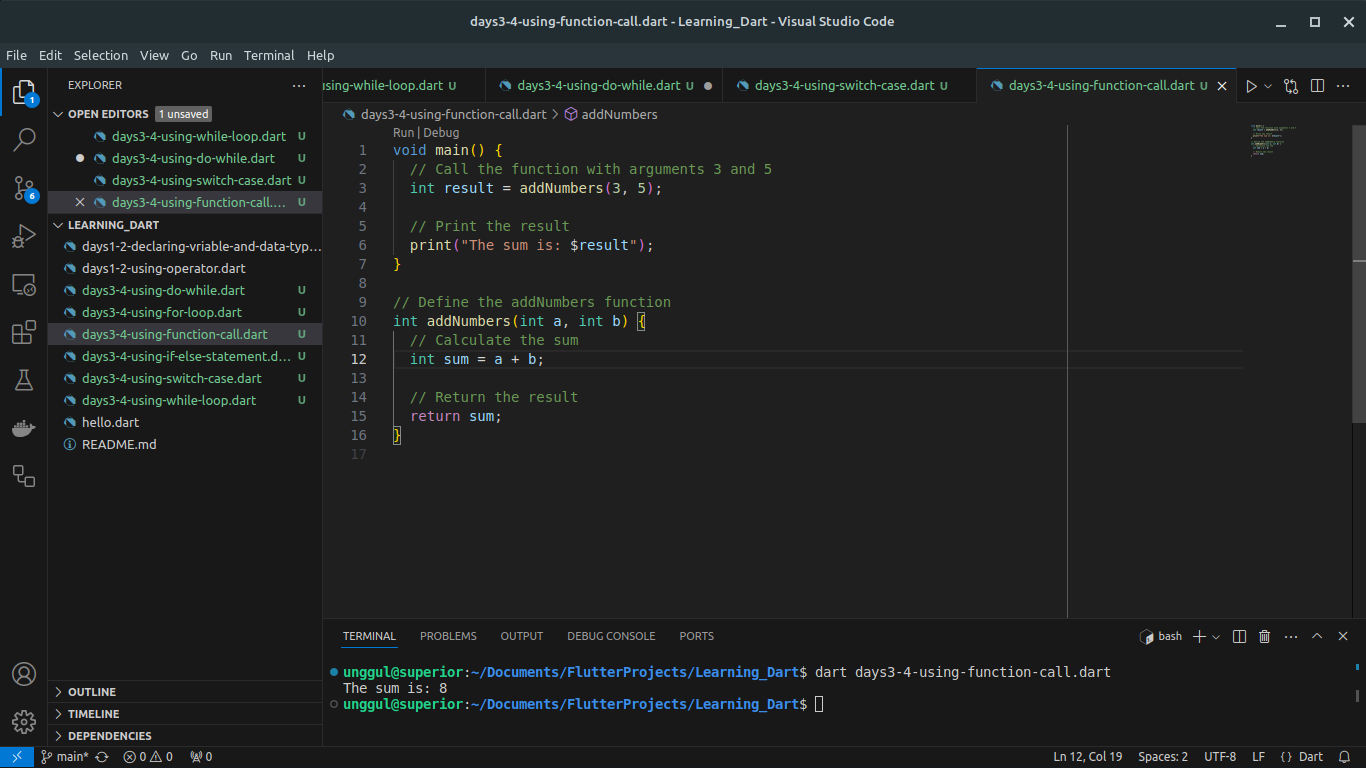
By following this guide, you'll have a solid understanding of flow control statements and functions in Dart, enabling you to write more complex and efficient programs. Happy coding!
Subscribe to my newsletter
Read articles from Unggul Cahya Saputra directly inside your inbox. Subscribe to the newsletter, and don't miss out.
Written by

Unggul Cahya Saputra
Unggul Cahya Saputra
I am a developer from Indonesia